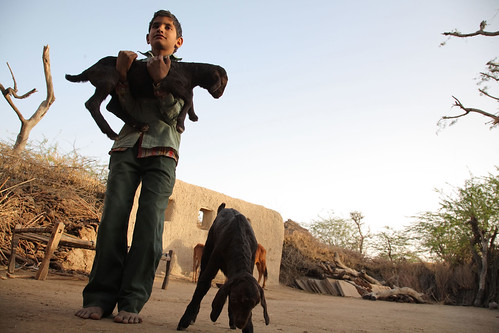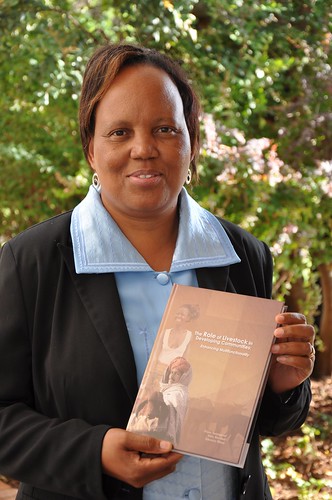Livestock products in a supermarket in Mozambique. The vibrant and emerging livestock markets in developing countires offer new economic opportunities for smallholders (Photo: ILRI/Mann)
Across much of the world, especially in developing countries, market opportunities for livestock products are increasing rapidly as a result of rising demand for animal products driven by growing populations, rising incomes and urbanization. These new markets have created opportunities for smallholder livestock producers, including poor rural farmers, to benefit from ready markets for milk, eggs and meat. But as markets expand, they also often give way to complex supply and distribution channels and the need for high-value products that can end up locking out smallholders from enjoying the benefits of these expanding markets.
How do smallholders maintain their ability to contribute to and benefit from the complex systems that will inevitably result as livestock markets grow?
According to researchers John McDermott and Berhanu Gebremedhin, from the International Livestock Research Institute (ILRI), and Karl Rich and Heather Burrow, from the Norwegian Institute of International Affairs and the University of New England, Australia, respectively, assessing existing relationships in these increasingly complex livestock value chains can not only reveal the reasons behind the increasing complexity of these systems, but also identify potential opportunities for smallholders and show policy and other constraints that can be addressed to encourage more of them to engage in the markets.
In findings presented in The role of livestock in developing communities: enhancing multifunctionality, a new book co-published by the University of the Free State South Africa, the Technical Centre for Agricultural Rural Cooperation (CTA) and ILRI, the researchers suggest areas that can be improved to encourage smallholder participation in livestock value chains. These include ‘local and informal markets, which offer the primary initial growth potential in poor countries’ and post-production systems such as that for processing manure for fuel and for processing hides and skins, which can provide important value addition for smallholders.
Smallholders are best at managing informal production environments, where they can make good use of household labour and low-cost production inputs. The authors cite widespread successful smallholder dairy production systems in South Asia, East Africa and Latin America, which are thriving.
This book reviews how smallholders are participating in emerging and growing livestock markets in Ethiopia and South Africa. The authors note that smallholder participation in livestock markets is particularly influenced by whether organizations within the livestock value chain encourage smallholders to join their organizations, which promotes ‘chain-level interventions that give opportunities for smallholders to participate in markets’.
In Ethiopia, for example, the emerging dairy market is served by farmer organizations like the Ada’a Cooperative in Debre Zeit, an hour’s drive from Addis Abba, which is working to provide feeds and animal health services to members, to improve local dairy breeds and milk collection and to introduce value-added processing. These efforts have led to a tenfold increase in milk collection, to 2.6 million litres, between 2000 and 2005, a gradual strengthening of smallholder links to markets, and a growing demand for breeding and feeding services, which are starting to be met by private companies.
‘There is evidence that setting up and maintaining strong organizations to manage market chains not only leads to improved economic benefits for producers but also leads to broader social benefits like gender development and education,’ the authors say. They recommend improving animal breeds, improving animal nutrition and integrating input supplies and knowledge and financial and market services into the market systems. ‘Smallholders are more likely to benefit from market initiatives when these markets are oriented towards sellers, where enabling policies from government exist and where collective action and support is mobilised . . . .’
‘Commodity-based trade approaches’ also help to bring more smallholders into the market. In Ethiopia, for example, a phased export program for beef that allows quarantine, vaccination and disease control followed by observation in an export-zone feed lot before slaughter has provided a way of certifying meat as disease-free for export to Middle Eastern markets.
The authors warn, however, that not all livestock value chains will be accessible to smallholders. Few of Africa’s small producers export beef and other meat because these products are governed by unique tariff systems and international trade rules and are open to international competitors.
The book recommends regular review of the performance of value chain systems to ensure they are responsive to both small-scale producers and changing consumer demands.
Read more about The role of livestock in developing communities: enhancing multifunctionality.




